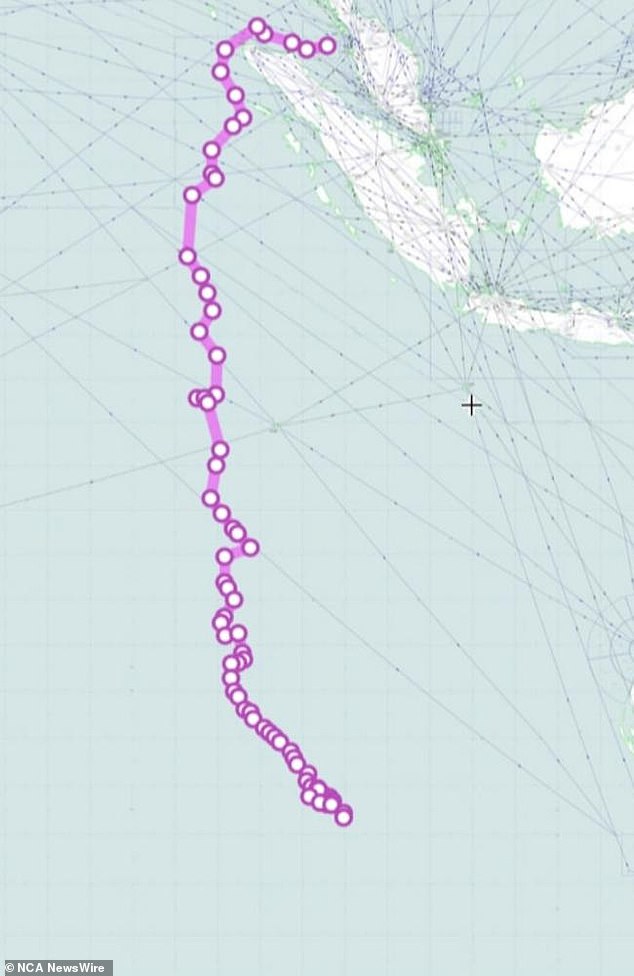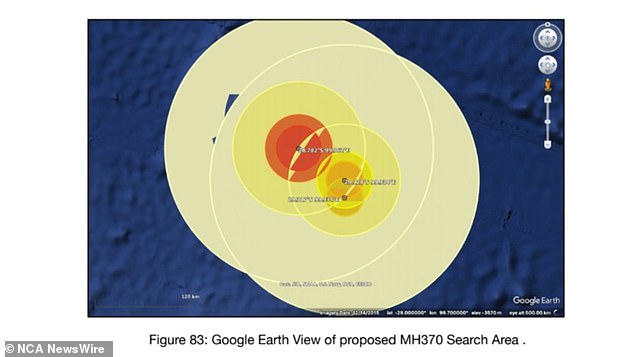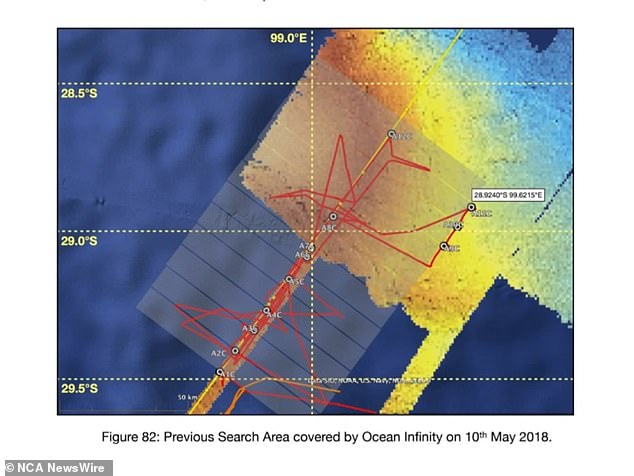MH370 flight: Bombshell claim in search for aircraft missing with 237 passengers since 2014
One of aviation’s greatest mysteries could soon be solved after researchers reveal what could be the final resting place of flight MH370.
The Malaysia Airlines plane disappeared about 38 minutes after leaving Kuala Lumpur airport en route to Beijing on March 8, 2014.
Despite a frantic search by governments and private companies, the plane was never found and the fate of the 237 passengers remains unknown.
A 229-page report released Wednesday now suggests the missing wreckage could be located about 1,560 miles west of Perth.
The Malaysia Airlines plane disappeared about 38 minutes after leaving Kuala Lumpur airport en route to Beijing on March 8, 2014 (image)

Approximate flight path of MH370, with the island of Sumatra at top right. Image: included
The revelation comes thanks to “pioneering” amateur radio technology known as a weak signal propagation reporter, or WSPR.
Researchers Richard Godfrey, Dr Hannes Coetzee and Professor Simon Maskell used WSPR to help detect and track the plane’s flight path.
“This technology has been developed over the past three years and the results represent credible new evidence,” the researchers said.
“It is consistent with analyzes by Boeing (…) and drift analyzes by the University of Western Australia of debris recovered around the Indian Ocean.”
When an aircraft flies through an amateur radio signal or WSPR link, it disrupts the signals whose data is stored in a global database.
The investigation used 125 of these perturbations to track the aircraft’s trajectory for more than six hours after one of its last radio contacts at around 6 p.m.
Combined with data from Boeing, Inmarsat satellites and drift analysis, this yields a “significant multidisciplinary result”: the same crash site.
“Together with (the data), a comprehensive picture of the last hours of flight MH370 can be collected,” the researchers said.
‘Flight MH370 was diverted to the Indian Ocean, where it crashed due to fuel exhaustion sometime after the last signal after midnight (…).
“As of this writing, MH370 has still not been found, despite extensive surface and underwater searches.
“About 10 million commercial passengers fly every day and the safety of the aviation industry depends on finding the cause of every accident.”
Dr. Westphal first proposed using WSPR to track MH370 in July 2020, following similar proposals in a 2016 NATO paper for other aircraft.
At a depth of 4,000 meters, the new location posited by the scientists is slightly north of previous estimates by researchers and researchers.
Just under half of the 130 by 89 km area now proposed by researchers as a possible crash site has been searched.
While the report offers a lifeline for families still searching for answers after more than nine years, it’s not without its limitations.
Aviation expert Geoff Thomas told the Today show on Friday he was hopeful about the report, but admitted there was resistance to it.
“There has been some criticism, but this report has been peer-reviewed,” Thomas said.
A scientist from the University of Liverpool and the ocean company who did the search in 2018 will use it as the basis for a new search.
“Confidence is very high. It has been worked on for four years and it has been reviewed over and over again again.
‘They (the investigators) are sure they’ve pinpointed where this plane is.’
The disappearance marked a grim milestone for Malaysia Airlines and aviation just months before MH17 was shot down over Ukraine.

Suggested search area on Google Maps. Image: included
MH370 departed Malaysia shortly before 5 p.m. with 12 crew members and 227 passengers from 14 countries, including 153 people from China.
At about 5:20 p.m., Captain Zahrie Shah responded to Malaysia’s air traffic control and said, “…contact Ho Chi Minh (…) goodnight.”
Shockingly, the plane went ‘dark’ soon after before returning to Malaysia, in the opposite direction of its intended flight path.
Primary civilian and military radar data reported that the aircraft flew back across the Strait of Malacca and into the vast Indian Ocean.
After about 7.5 hours, MH370 ran out of fuel and then crashed into the ocean 11 minutes later, never to be found.
Debris from the plane was found as far as Madagascar in the following years, with a total of 41 pieces recovered.
Ocean Infinity, a maritime robotics company, searched for the aircraft for years and began searching again in March 2022 on a no find, no fee basis.
Mr Thomas told host Sarah Abo that 120 books had been written about MH370 but that the families of the passengers supported the report.

Previous search area covered by Ocean Infinity in 2018. Image: Supplied
He said the findings would be presented to the Malaysian government, with details of the report dedicated to the families of the passengers.
The long-standing mystery inspired multiple conspiracy theories due to the plane’s strange flight pattern before disappearing.
Speculations about the reason for the strange detour run the gamut from hijackings by terrorists to whether they were captured by the US for some reason.
Allegations, heavily disputed by US authorities such as the FBI, claim that the plane was flown to a remote island or atoll on orders.
Other allegations circulated around Captain Shah’s family and whether the plane was deliberately dumped in the Indian Ocean.
In 2018, senior Boeing 777 pilot and instructor Simon Hardy claimed on 60 Minutes that the crash was the result of a “murder-suicide.”
Mr Hardy saw claims that the plane would have avoided military radar at the Thai-Malaysian border; the claim has never been substantiated.
The possibility of a fire, a cyber-attack or that the plane was shot down have all been mooted, but cannot credibly answer the mystery.
